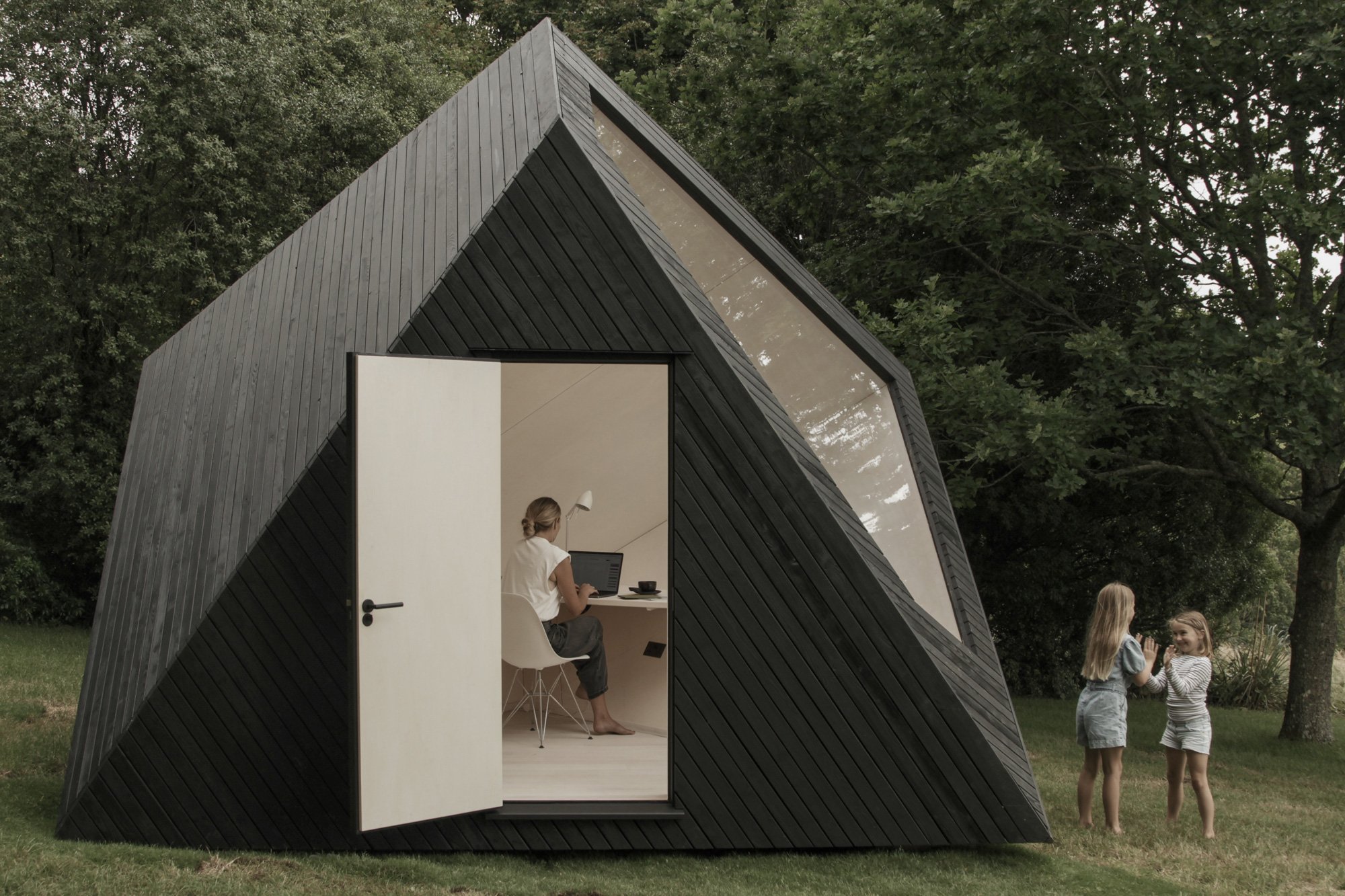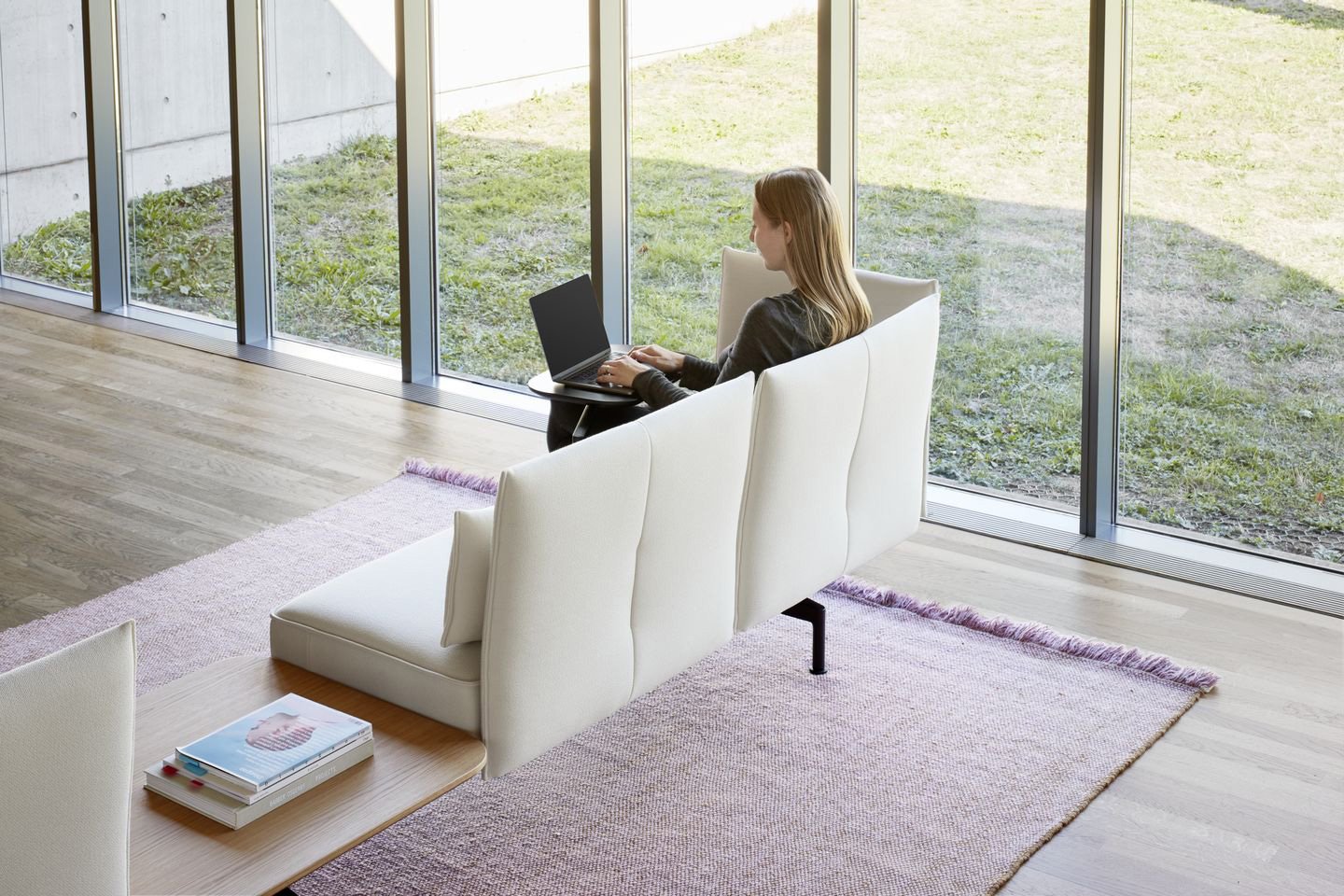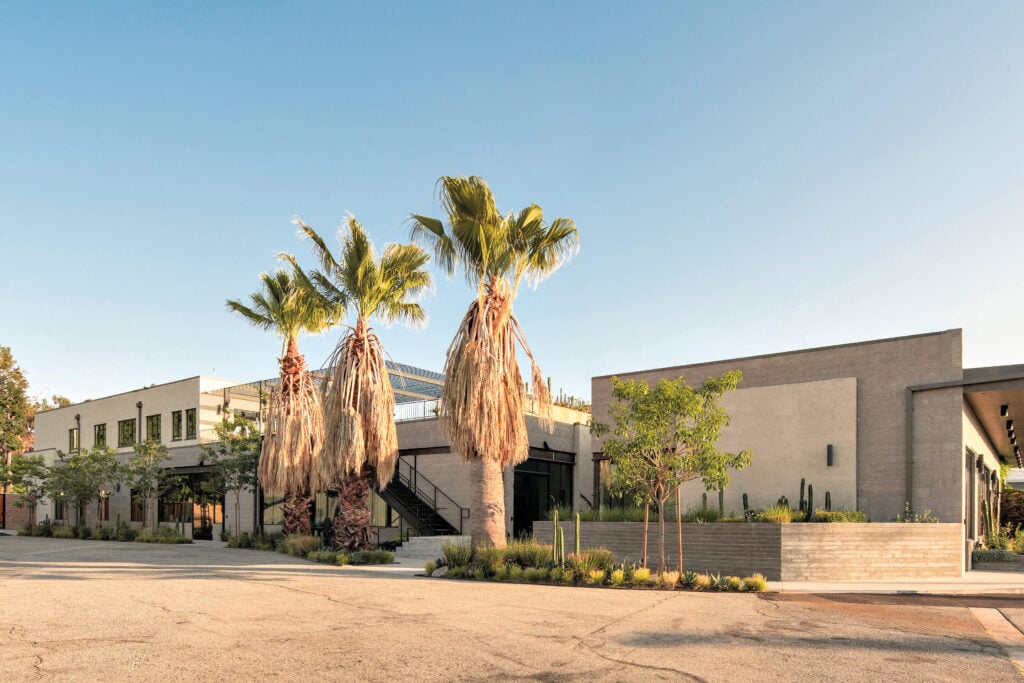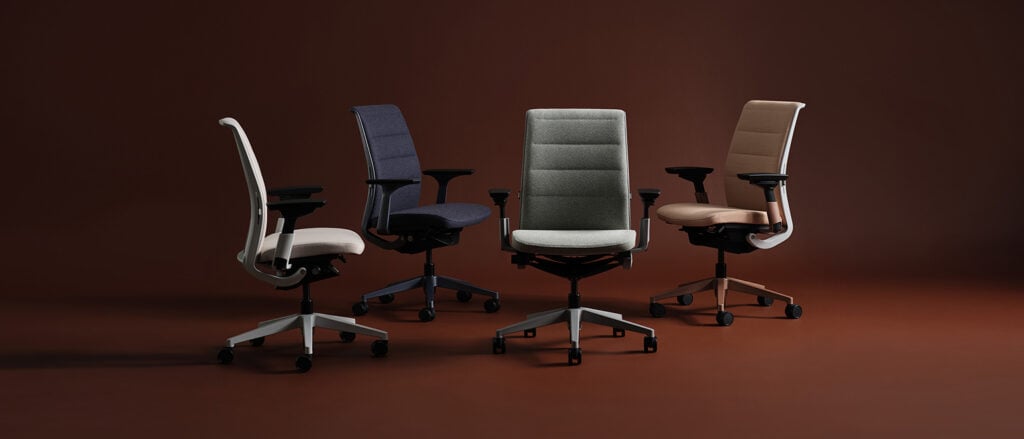
September 21, 2022
Remixing Work and Home: How to Think About Hybridity
Innovation happens when old categories are remixed into a new hybrid.
Hybrid Thinking
Hybridity is a powerful conceptual tool for creatives. Innovation happens when old categories are remixed into a new hybrid. Think of the way the first smart phones integrated the utility of the computer and the mobile phone into something wildly new. Or think of the way Airbnb remixed real estate, hospitality, social media, and e-commerce into a disruptive business model.

Hybrids can take either “soft” or “hard” forms. As we explore hybrids of home and office, a soft version might look like the logic of home slowly overtaking the office like a virus. Or an office that appears like a home where the original codes of both are still identifiable and familiar. A hard hybrid might look more like a full genetic blend, the offspring of two fully remixed concepts where the codes of both are intermixed to the point of creating something completely new and unfamiliar. Hybrids open a space in the imagination to challenge fixed categories.
For example, many folks during lockdown used the home dining table as an improvised desk for WFH. What happens when we remix the categories of desk and dining table? The result might include the various utilities of each type and their expressive characters too. There is a temporal shift of mode to consider as well—the product serves as a desk during the day and a dining table in the evening.
The same kind of category play can be applied to both object vocabularies and spatial vocabularies. Since a dining space is already made for a social gathering, what if we layer the utility of video conferencing onto the space? Thinking in hybrids offers designers new conceptual tools to create solutions.
Bridging the Gap Between Binaries
The conditions of hybrid work cultures may also inspire designers to find new forms of expression in-between binary concepts like commercial and residential, professional and domestic, public and private, physical and virtual, synchronous and asynchronous, local and global, urban and pastoral. To structure this creative visualization process, we might identify a range of scales—the body, the furniture, the room, the building, the city—and examine each through a spatial binary to imagine various in-between conditions.
For example, if we think of the virtual/physical binary at the scale of a room, we may begin to imagine a range of spatial technologies that bridge the gap between these binary concepts—ranging from display screens to augmented reality, to virtual reality, and even holographic projections. These in-between spaces can help us imagine whole new conditions and settings for work such as virtual realities or digital twins.
While these methods are useful for imagining new spatial vocabularies, during moments of cultural change they can also be powerfully applied to rethink market categories. Existing categories keep design fixed in old patterns; what new opportunities might appear when we collapse the distinctions between contract and residential furniture markets, for example?

WFH Needs are Individual, not Universal
During the early lockdown, a friend described setting up a WFH space in her bedroom, where she could close the door and have some acoustic separation from her noisy kids. She soon found this solution to be worse than the problem because she valued her bedroom as an emotional escape from work life. Now work was always present in what had once been a place of refuge. Stories like this are common today. Workers must often collapse their multiple identities—worker, parent, spouse, and others—into a single space.
Crucially, it’s not just the spaces of work and home that are being integrated in new ways, but also the temporal rhythms, social relations, and identities associated with each. People’s experiences of WFH are highly contextual and vary widely depending on their overlapping identities and needs as individuals. Some younger workers report less satisfaction with WFH because they often share domestic space with roommates, which can create spatial problems. On the other hand, some caregivers like parents of young children, for example, find the flexibility of WFH liberating. But at the same time, for every parent that prefers WFH, there’s another who longs to return to the office. Diversity abounds within and across categories.
What new ways might space and furniture mediate between people to let home life develop alongside work life? How can adults share space with children (or elders) while both are doing “homework,” and what are the temporal dynamics of those relations? Are there ways for family members to share space while engaged in different activities? These questions obviously apply to the home but are rarely applied to the office. How might the shared office be designed as a more “domesticated” family-friendly space?
The design challenge is to look beyond the physicality of spatial forms to understand the deeper social needs that spatial forms can fulfill. It’s important to recognize that the reasons for choosing remote work vary greatly, and those reasons need to be navigated and negotiated into hybrid work cultures.
Thinking more sociologically acknowledges that space is never “just” space. It can cultivate or constrain the experiences, relations, and identities within it. Thinking, then, about the experiences, relations, and identities associated with each of “home” and “work” is essential to (re)designing their connection.

Remixing Space, Time, and Identity
If we look closer at these social needs, we may recognize a range of attitudes and modal strategies in how workers self-manage their connections between space, time, and identity to navigate a new mix between work and home.
- Separation— keeping the two apart, protecting their respective boundaries both spatially, conceptually, and temporally.
- Prioritization— acknowledging some level of coexistence but establishing one as having greater importance than the other; imposing a hierarchy and assigning space and time accordingly.
- Peaceful Coexistence— sharing space but otherwise remaining separate in time.
- Multitasking— engaging both in the same space and time.
- Switching— moving back and forth, on and off between the two for defined periods of time (e.g., a desk that folds up and goes in a closet)
- Full Synthesis—actively seeking to integrate the two (in the hopes of enriching both (e.g., allowing children to learn more about your job, with the comforts and conveniences of home leading to increased productivity)
This list is far from exhaustive, and its categories are not exclusive; nevertheless, these modes usefully remind us that work and home can relate to each other in myriad ways. Furthermore, those myriad relations involve not just spaces but sometimes compatible, and sometimes not-so-compatible schedules, identities, social relationships, and cultural expectations. Only by taking all these factors into account, can designers help individuals navigate these relations in highly contextual ways that are customized to individual needs.
As noted in the first essay in this series, the pandemic already forced many processes of change. While designers may be called on to remix and reimagine work cultures as a response, we also need to observe, listen, and learn from the pandemic. In our next section, we will interpret some of those changes and what they might mean for evolving work cultures.
Read Part III of Work from Home Changes Both: The Pandemic’s Work-From-Home Lessons
Scott Klinker is principal of Scott Klinker Design Studio and has been the 3D designer-in-residence at Cranbrook Academy of Art in Michigan since 2001, where he oversees the graduate 3D design program. His practice strikes a balance between cultural research, industry projects and experiments, and working with design-driven clients like Herman Miller, Alessi, Steelcase, Landscape Forms, Burton Snowboards, and others.
Would you like to comment on this article? Send your thoughts to: [email protected]
Latest
Profiles
Breland–Harper Mines the Past to Design a Better Future
In less than a decade, Ireland-Harper, the Los Angeles–based studio has completed over 100 adaptive reuse projects.
Products
How the Furniture Industry is Stepping Up on Circularity
Responding to new studies on the environmental impact of furniture, manufacturers, dealers, and start-ups are accelerating their carbon and circularity initiatives.
Viewpoints
The 2024 Net Zero Conference Highlights the Importance of Collective Action
Last month, leading climate experts convened at the Anaheim Convention Center to reenvision the built environment for a net zero future.





